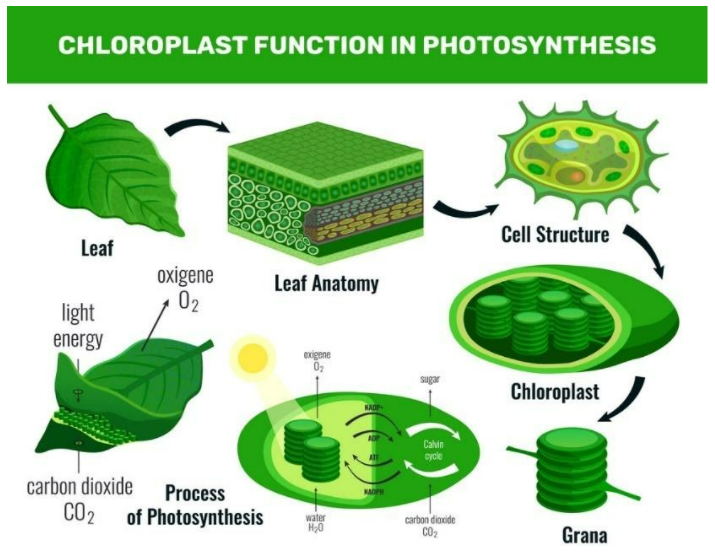
Where are carotenoid pigments found?
Answer
404.4k+ views
1 likes
Hint: Carotenoids are pigments of plants which are found in a variety of plant products such as- fruits and vegetables. The common carotenoids found in the human body are- beta-carotene, alpha-carotene, lycopene, lutein and beta-cryptoxanthin. Carotenoids are fat soluble and also, they consist of antioxidant properties which are also present in carrot, sweet potatoes and vegetables like- papaya, tomatoes, bell peppers.
Complete answer-
Carotenoids are usually found in the chloroplast of thylakoid membranes, as they are photosynthetic plastids in green tissues. Carotenoids are found abundantly in membranes which support photosynthesis and photoprotection.
Carotenoids are indispensable to not only plants but also very crucial in human diets. Carotenoids are originated or biosynthesis of carotenoids are from the organelle plastid. In plastids they occur in variant forms such as- etioplasts, chloroplasts, amyloplasts and chromoplasts. Hence, clearly plastids play an important role in governing carotenogenic activity.
Understanding carotenoid diversity and metabolism is multifaceted towards developing nutrient enriched food crops. These triterpenoid pigments are widely distributed in bacteria and fungi also in algae. Apart from vegetables and carotenoids are reported in many flowers and fruits and roots also. The typical color of carotenoids is orangish red and also, they have their own vivid type of color like- yellow, violet and red hues.

Note:
Despite providing photoprotection in plants, carotenoids provide precursors for the growth hormones such as Abscisic acids and string lactones. The derivatives of carotenoids also act as signaling molecules to mediate plant development. Apart from functions in human nutrition and health, carotenoids are used as preventive measures in some chronic diseases like- cardiovascular diseases, cancer and eye diseases.
Complete answer-
Carotenoids are usually found in the chloroplast of thylakoid membranes, as they are photosynthetic plastids in green tissues. Carotenoids are found abundantly in membranes which support photosynthesis and photoprotection.
Carotenoids are indispensable to not only plants but also very crucial in human diets. Carotenoids are originated or biosynthesis of carotenoids are from the organelle plastid. In plastids they occur in variant forms such as- etioplasts, chloroplasts, amyloplasts and chromoplasts. Hence, clearly plastids play an important role in governing carotenogenic activity.
Understanding carotenoid diversity and metabolism is multifaceted towards developing nutrient enriched food crops. These triterpenoid pigments are widely distributed in bacteria and fungi also in algae. Apart from vegetables and carotenoids are reported in many flowers and fruits and roots also. The typical color of carotenoids is orangish red and also, they have their own vivid type of color like- yellow, violet and red hues.

Note:
Despite providing photoprotection in plants, carotenoids provide precursors for the growth hormones such as Abscisic acids and string lactones. The derivatives of carotenoids also act as signaling molecules to mediate plant development. Apart from functions in human nutrition and health, carotenoids are used as preventive measures in some chronic diseases like- cardiovascular diseases, cancer and eye diseases.
Latest Vedantu courses for you
Grade 9 | CBSE | SCHOOL | English
Vedantu 9 CBSE Pro Course - (2025-26)
School Full course for CBSE students
₹35,000 per year
Recently Updated Pages
Master Class 11 Economics: Engaging Questions & Answers for Success

Master Class 11 Business Studies: Engaging Questions & Answers for Success

Master Class 11 Accountancy: Engaging Questions & Answers for Success

Express the following as a fraction and simplify a class 7 maths CBSE

The length and width of a rectangle are in ratio of class 7 maths CBSE

The ratio of the income to the expenditure of a family class 7 maths CBSE

Trending doubts
State and prove Bernoullis theorem class 11 physics CBSE

What are Quantum numbers Explain the quantum number class 11 chemistry CBSE

Write the differences between monocot plants and dicot class 11 biology CBSE

Why is steel more elastic than rubber class 11 physics CBSE

Explain why a There is no atmosphere on the moon b class 11 physics CBSE

1 ton equals to A 100 kg B 1000 kg C 10 kg D 10000 class 11 physics CBSE




